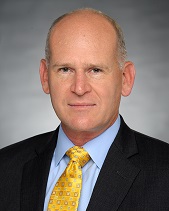The State of New York has submitted a request to the Centers for Medicare and Medicaid Services (CMS) for a four-year extension and renewal of its Delivery System Reform Incentive Payment (DSRIP) program as part of the state’s 1115 Medicaid waiver. The current waiver is set to expire at the end of March 2020. In its proposal, the State separated the timeframe into an extension and renewal period:
- Phase One – Extension (April 2020 – March 2021): With $625 million projected to remain from the original DSRIP waiver, the State will provide funding for Performing Provider Systems (PPSs) to continue pay-for-performance work on a shorter list of measures, with 80 percent of funding going to a base performance pool and 20 percent placed in a high performance pool.
- Phase Two – Renewal (April 2021 – March 2024): With $7.4 billion in new funding, the State will create new entities to implement promising practices, engage Community Based Organizations (CBOs) and increase value-based payment (VBP) penetration.
While we wait for CMS to respond, the State’s request provides insights into their priorities over the next four years, many of which are likely to be implemented through policy and managed care contracting, if not with accompanying federal funding. The State made some significant departures from the draft proposal released in September and added many details – here is what PPSs, managed care organizations (MCOs) and providers need to know.
What’s Changed
The renewal request replaced Value Driving Entities (VDE) from the September draft with Value Management Organizations (VMO), but the change is in name only – the VMO is still a replacement for the PPS. MCOs and CBOs must still be included in the governance of the VMO, but the request adds Medicaid consumers and local health departments as mandatory members of executive steering groups.
In the draft proposal, the State remained open to allowing a variety of organizations to apply to form VMOs, but the official request makes it clear that PPSs are expected to continue on as VMOs, not providing any examples of other types of organizations that can apply. Additionally, if PPSs want to receive funding in the Extension phase, they are expected to submit an implementation plan as a VMO in the renewal phase.
After a significant response in the public comment period, the State has specified that Social Determinant of Health Networks (SDHNs), the regional networks of CBOs, can only be run by a CBO or a group of CBOs. Previously, the State had left open the possibility that PPSs or health systems could lead SDHNs.
What’s New
The waiver request provides additional information about funding, required programs and performance measurement for the renewal period.
Funding
Much like in the original DSRIP waiver, VMOs will be valued based on attribution and ability to implement the promising practices. The VMOs achieve awarded funds based on performance from two sources of funding:
- Network Accountability Fund: 65 percent of funds will be distributed based on meeting gap to goal performance targets for the VMO’s attributed population, much like the original DSRIP methodology. Any funds not achieved will be repurposed towards the Regional Accountability Fund.
- Regional Accountability Fund: 35 percent of funds are designated for all VMOs in a particular region based on the entire region’s performance. This fund appears to be in a response to the high churn rates in the first demonstration, particularly among overlapping downstate PPSs.
Left unstated in the draft proposal was the incentive MCOs would have to participate in VMOs and how VMOs would be sustainable long-term. In the new proposal, the VBP incentive pool works to resolve those concerns, encouraging MCOs to join VMOs by tying funding to their participation. If an MCO joins a VMO, they will be eligible to receive extra funds for entering into or enhancing VBP arrangements. MCOs will receive funds from the VBP Incentive Pool based on a number of factors, including attribution, level of risk and timing. To be eligible, MCOs must be active in VMO governance, share data among the VMO participants and be involved in VMO initiatives.
As a sustainability plan for VMOs, MCOs are expected to enter into management services agreements with VMOs to support aspects of VBP arrangements, providing VMOs with a potential long-term funding stream. The state will also set funding goals for VMOs and MCOs for social determinants of health (SDOH) services, which may provide SDHNs with a stable source of funding. Additionally, the state will provide up-front funding to SDHNs for building infrastructure and capacity.
Required Programs
The state’s waiver request details how VMOs are expected to advance the promising practices. Each VMO will be expected to implement five different focus areas:
- Transforming and integrating behavioral health
- Improving care coordination, care management and care transitions
- Utilizing community health workers and linking to SDHN high-priority social care
- Addressing the opioid crisis
- Addressing high utilizers of care through rapid-cycle continuous improvement processes
The promising practices operate much like the original DSRIP projects in the application and performance periods. VMOs must complete a community needs assessment and then submit an implementation plan for a selection of activities from a larger menu. The quality of the implementation plan and total attribution will determine funding. Some funds will be provided for implementing the promising practices, but most funds will be reserved for meeting broader performance measures.
Performance Measurement
For the one-year extension, the State proposes removing all DSRIP performance measures other than a selection of Domain 3 measures, potentially preventable readmissions and emergency department (ED) visits. All measures will be pay-for-performance save other than a handful of measures currently collected through medical record review. Those measures will be pay for reporting while the state shifts to collecting them through Electronic Health Records (EHR).
Similar to the current process, VMOs will work to meet annual improvement targets based on closing gaps to the statewide performance goal during the three-year renewal. The performance measures are mostly previous DSRIP measures from Domains 3 and 4, focused on primary care, children’s health and behavioral health. The renewal will also include new measures, largely focused on palliative and long-term care, and some measures that are yet to be created for SDOH.
What Remains Unclear
While the demonstration years will still run from April to March, the State has moved measurement years to align with calendar years. However, it is not clear when that change will occur so the timeframe for Measurement Year 6 (MY6) is difficult to discern. If MY6 ends in June 2020, PPSs will have very little time to meet performance measures. If MY6 ends in December 2020 or later, payment to PPSs for the extension will be delayed nearly to the end of 2021.
The waiver request remains hazy about the member attribution process for the renewal phase. While the State claims that attribution will be simpler and align with standard MCO methodology, they note that simple primary care physician attribution is insufficient and recommend using a care management hierarchy, which sounds much like the current DSRIP attribution ladder. However, the waiver request is clear that attribution would be prospectively fixed for each measurement period and not calculated retrospectively.
The details of how SDHNs can enter VBP arrangements are still opaque. SDHNs have the option to take upside and downside risk, but it is difficult to imagine CBO lead entities meeting the substantial capital reserve requirements necessary for downside risk.
The most uncertain detail, of course, is how CMS will respond to the waiver request. They have until the end of March to provide a response, but could extend negotiations further. What is clear, however, is that these priorities – including the shift to VBP, the address of SDOH and the integration of primary care and behavioral health – will be pursued by the State in the coming years, regardless of CMS’ response.
Should you have any questions on the proposed New York DSRIP extension, please reach out to Allen Miller or Brian Ball
at amiller@copehealthsolutions.com or bball@copehealthsolutions.com.

